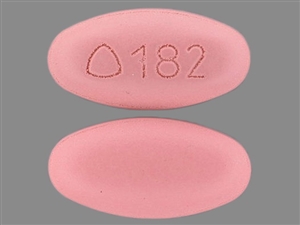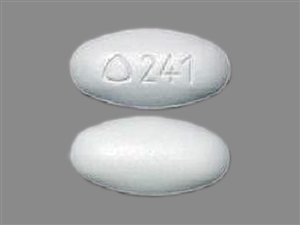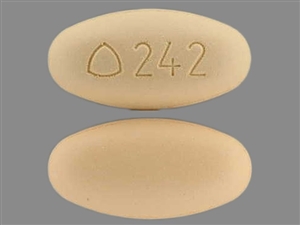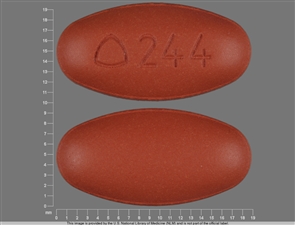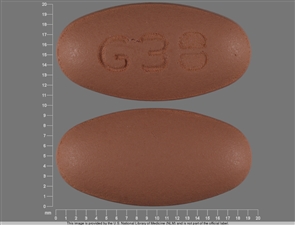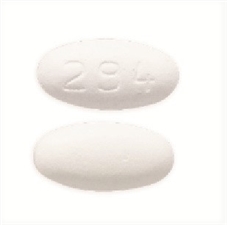trandolapril and verapamil
What is the most important information I should know about trandolapril and verapamil?
Do not use if you are pregnant. Stop using this medicine and tell your doctor right away if you become pregnant.
You should not use this medicine if you have a heart rhythm disorder, low blood pressure, or a serious heart condition such as "sick sinus syndrome" or "AV block" (unless you have a pacemaker). Do not take trandolapril and verapamil within 36 hours before or after taking medicine that contains sacubitril (such as Entresto).
If you have diabetes, do not use use trandolapril and verapamil together with any medication that contains aliskiren (a blood pressure medicine).
What is trandolapril and verapamil?
Trandolapril is an ACE inhibitor. ACE stands for angiotensin converting enzyme. Verapamil is a calcium channel blocker. It works by relaxing the muscles of your heart and blood vessels. Trandolapril and verapamil is a combination medicine used to treat high blood pressure (hypertension). Trandolapril and verapamil may also be used for purposes not listed in this medication guide.
What should I discuss with my healthcare provider before taking trandolapril and verapamil?
You should not use this medicine if you are allergic to trandolapril or verapamil, or if you have:
- certain serious heart conditions, especially "sick sinus syndrome" or "AV block" (unless you have a pacemaker);
- a heart rhythm disorder;
- low blood pressure;
- an allergy to any other ACE inhibitor, such as benazepril, captopril, fosinopril, enalapril, lisinopril, moexipril, perindopril, quinapril, or ramipril; or
- if you also use flibanserin (Addyi).
Do not take trandolapril and verapamil within 36 hours before or after taking medicine that contains sacubitril (such as Entresto).
If you have diabetes, do not use trandolapril and verapamil together with any medication that contains aliskiren (a blood pressure medicine). You may also need to avoid taking trandolapril and verapamil with aliskiren if you have kidney disease.
Tell your doctor if you have ever had:
- kidney disease (or if you are on dialysis);
- liver disease;
- congestive heart failure;
- diabetes; or
- a nerve-muscle disease such as muscular dystrophy.
Do not use if you are pregnant. If you become pregnant, stop taking this medicine and tell your doctor right away. Trandolapril and verapamil can cause injury or death to the unborn baby if you take the medicine during your second or third trimester.
You should not breastfeed while you are using trandolapril and verapamil.
How should I take trandolapril and verapamil?
Follow all directions on your prescription label and read all medication guides or instruction sheets. Your doctor may occasionally change your dose. Use the medicine exactly as directed.
Trandolapril and verapamil works best if you take it with food.
Your blood pressure will need to be checked often.
Some things can cause your blood pressure to get too low. This includes vomiting, diarrhea, or heavy sweating. Call your doctor if you are sick with vomiting or diarrhea.
If you need surgery, tell your surgeon you currently use this medicine. You may need to stop for a short time.
Keep using this medicine as directed, even if you feel well. High blood pressure often has no symptoms. You may need to use blood pressure medication for the rest of your life.
Store at room temperature away from moisture and heat.
What happens if I miss a dose?
Take the medicine as soon as you can, but skip the missed dose if it is almost time for your next dose. Do not take two doses at one time.
What happens if I overdose?
Seek emergency medical attention or call the Poison Help line at 1-800-222-1222.
Overdose symptoms may include slow heart rate, weak pulse, muscle weakness, tingly feeling, seizure (convulsions), feeling light-headed, or fainting.
What should I avoid while taking trandolapril and verapamil?
Avoid getting up too fast from a sitting or lying position, or you may feel dizzy.
Do not use potassium supplements or salt substitutes while you are taking trandolapril and verapamil, unless your doctor has told you to.
What are the possible side effects of trandolapril and verapamil?
Get emergency medical help if you have signs of an allergic reaction: hives; severe stomach pain; difficulty breathing; swelling of your face, lips, tongue, or throat.
Call your doctor at once if you have:
- a light-headed feeling, like you might pass out;
- upper stomach pain, and jaundice (yellowing of the skin or eyes);
- chest pain, fast, slow, or uneven heart rate;
-
high potassium level --nausea, weakness, tingly feeling, chest pain, irregular heartbeats, loss of movement;
-
kidney problems --little or no urination, swelling in your feet or ankles, feeling tired or short of breath;
-
low white blood cell counts --fever, chills, feeling light-headed, mouth sores, skin sores, sore throat, cough, trouble breathing; or
-
fluid build-up in or around the lungs --pain when you breathe, feeling short of breath while lying down, wheezing, gasping for breath, cough with foamy mucus, cold, clammy skin, anxiety, rapid heartbeats.
Common side effects may include:
- cough;
- cold symptoms such as stuffy nose, sneezing, sore throat;
- headache, dizziness;
- chest pain, back pain;
- constipation;
- feeling tired; or
- abnormal liver function tests.
This is not a complete list of side effects and others may occur. Call your doctor for medical advice about side effects. You may report side effects to FDA at 1-800-FDA-1088.
What other drugs will affect trandolapril and verapamil?
If you also take disopyramide, avoid taking it within 48 hours before or 24 hours after you take trandolapril and verapamil.
Sometimes it is not safe to use certain medications at the same time. Some drugs can affect your blood levels of other drugs you take, which may increase side effects or make the medications less effective.
Many drugs can affect trandolapril and verapamil. This includes prescription and over-the-counter medicines, vitamins, and herbal products. Not all possible interactions are listed here. Tell your doctor about all your current medicines and any medicine you start or stop using.
Where can I get more information?
Your pharmacist can provide more information about trandolapril and verapamil.
Remember, keep this and all other medicines out of the reach of children, never share your medicines with others, and use this medication only for the indication prescribed.
Every effort has been made to ensure that the information provided by Cerner Multum, Inc. ('Multum') is accurate, up-to-date, and complete, but no guarantee is made to that effect. Drug information contained herein may be time sensitive. Multum information has been compiled for use by healthcare practitioners and consumers in the United States and therefore Multum does not warrant that uses outside of the United States are appropriate, unless specifically indicated otherwise. Multum's drug information does not endorse drugs, diagnose patients or recommend therapy. Multum's drug information is an informational resource designed to assist licensed healthcare practitioners in caring for their patients and/or to serve consumers viewing this service as a supplement to, and not a substitute for, the expertise, skill, knowledge and judgment of healthcare practitioners. The absence of a warning for a given drug or drug combination in no way should be construed to indicate that the drug or drug combination is safe, effective or appropriate for any given patient. Multum does not assume any responsibility for any aspect of healthcare administered with the aid of information Multum provides. The information contained herein is not intended to cover all possible uses, directions, precautions, warnings, drug interactions, allergic reactions, or adverse effects. If you have questions about the drugs you are taking, check with your doctor, nurse or pharmacist.
Copyright 1996-2020 Cerner Multum, Inc. Version: 11.01. Revision date: 10/28/2019.
|
 |
|
